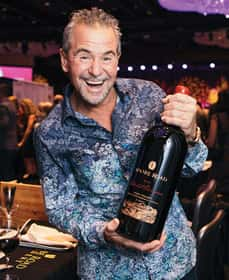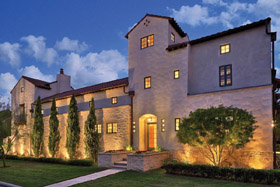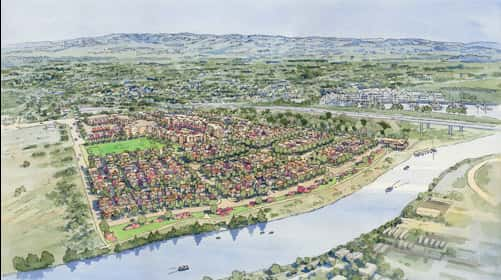Petaluma has come a long way since its early days as the egg capital of the world. For well over a decade, the city and residents have been proactively working to revitalize the downtown area while preserving as much of its historic charm as possible. Exciting developments continue to be in the works in and around downtown Petaluma – projects that will not only continue to revitalize the city aesthetically, but also meet the needs of businesses, tourists, residents and the general public.
Adobe Road Winery, currently based on the East side of Petaluma, with a temporary tasting room in the Great Petaluma Mill, hopes to build an approximately 15,000-square-foot facility that will house the winery and production, a tasting facility and visitor center, a corporate event center with a commercial kitchen and a motorsports museum (see “A New Museum in Town,” page 47).
Kevin Buckler, CEO of Adobe Road Winery, started racing cars in 1995, about the same time he started making wine. Initially, he and his wife Debra, who serves as chief financial officer, rented custom crush facilities, but by 2002 the winery and demand had become large enough to make wine on a commercial scale.
During this same timeframe, Buckler had been stacking up win after win in the race world, eventually creating and building up the company TRG (The Racer’s Group), which has become one of the most successful professional sportscar teams in the world. In 2004, the Bucklers made the decision to follow the same principles that made their race team so successful and take more control over their winemaking. To that end, they built a 10,000-square-foot winery and production facility behind TRG race headquarters in East Petaluma, complete with a speakeasy-style tasting room in the race shop. In addition, they opened a tasting room on the Sonoma square.
Taking it to the next level
 After more success, growth and demand, the Bucklers again decided to take the winery to the next level, with much encouragement and the financial backing of friends and associates. After looking for space in the town of Sonoma and as far away as Napa County, they decided to stay true to their Petaluma roots.
After more success, growth and demand, the Bucklers again decided to take the winery to the next level, with much encouragement and the financial backing of friends and associates. After looking for space in the town of Sonoma and as far away as Napa County, they decided to stay true to their Petaluma roots.
“Eventually, Debra said, ‘Why are we looking so far away when we have Petaluma right here?’” says Sonny Martin, director of hospitality for Adobe Road Winery. “‘Petaluma is on such a great trajectory and we’ve been in Petaluma all this time anyway.’
He continues, “Petaluma is on a trajectory where, it’s at the beginning stages of what Healdsburg has become right now. It’s like Healdsburg was 15 to 20 years ago.”
After searching for property in and around Petaluma, most of which was already spoken for, Buckler found a piece of riverfront property that had not yet been redeveloped. The property, on First and C streets, was owned by Bay Bridge Garage. After several months Buckler convinced the owner to sell.
“We’re working with a local architect right now for a site redesign,” says Martin. “It will be something authentic to Petaluma—something that features and showcases the premiere value of that piece of property, which is the riverfront.”
The new facility will let Adobe Road Winery increase annual production and build a complete state-of-the-art winery and visitor center right in the heart of downtown Petaluma. In addition, the Bucklers hope the corporate event center will become a draw for local businesses, hosting everything from weddings to corporate retreats and management seminars. A four-story city parking garage across the street will help mitigate congestion during events, and the new SMART train station in downtown Petaluma is only blocks away.
What’s in it for Petaluma?
While the winery has yet to submit any applications for project approvals, it has discussed conceptual project ideas with city staff at a Development Review Committee meeting to identify anticipated permit requirements and likely significant considerations, based on the potential use and location.
“A clear benefit of a project of the type considered by the Bucklers,” says Heather Hines, planning manager for the city of Petaluma, “is to increase activity within the boundaires of the Central Petaluma Specific Plan, improve pedestrian connectivity and engage with the river.”
So far, the new winery plans seem to have garnered support from the community and its future neighbors. One of their close neighbors (and supporters) is the Petaluma Yacht Club, which is looking forward to having a winery close by as an additional benefit to both their members and members of the other yacht clubs with whom it has reciprocal relationships.
“Petaluma is one of the only places boat owners can bring their yachts, dock and walk to a thriving and beautiful downtown with all kinds of great things to do,” says Martin. “Whether it’s fantastic restaurants, boutiques, entertainment from the Mystic Theater and the movie theater house or now a winery and tasting room, it’s a great draw for people from all over.”
What the Bucklers are most excited about is that opening this wine facility really sets them apart. In and around the Sonoma square, there are dozens of wineries within blocks of each other. But being the first full-production winery in downtown Petaluma, they’re at the beginning of what they hope is the next phase of the city.
“[In the North Bay], you can go to lots of wineries, and the estates can be beautiful and bucolic,” says Martin, “but where else can you dock your yacht, walk to a winery tasting room, sit out and enjoy a beautiful waterfront view, have a wood-fired pizza and a bottle of wine? I don’t know of any other winery that brings the three connections of the motorsports racing world, waterfront activities and wine all in one venue.”
Serving a growing population
 Further down the river, at the end of Hopper Street at the eastern edge of downtown, an entirely different project is in the works—a large, mixed-use project that includes housing, office and commercial space, a hotel and parks. For now, the project is called simply Riverfront, though portions will likely be separately named as development occurs.
Further down the river, at the end of Hopper Street at the eastern edge of downtown, an entirely different project is in the works—a large, mixed-use project that includes housing, office and commercial space, a hotel and parks. For now, the project is called simply Riverfront, though portions will likely be separately named as development occurs.
Conceived by Basin Street Properties (which also developed Petaluma’s Theatre District), Riverfront will transform a currently vacant, close to 35-acre parcel of land to build out approximately 134 single family homes, 100 apartments over commercial space, 39 townhomes and some work/live units; the hotel will offer 122 rooms and the office space will encompass approximately 45,000 to 60,000 square feet.
In addition, Riverfront involves the creation of more than eight acres of parks and trails that will provide access to the Petaluma River, as well as a boathouse that will be accessible to the public. Through the public review process, the city has determined the project falls within the parameters of the city’s General Plan, the Central Petaluma Specific Plan, the Bike and Pedestrian Master Plan and the River Enhancement Plan.
With its dense mix of housing types ranging in size and easy access to Highway 101 and the new SMART train, Basin Street hopes the project will alleviate some of the housing shortages the county and city have been facing. While the project doesn’t specifically provision for affordable housing, it will pay housing in-lieu fees for each residential unit, which can then be used for construction of affordable housing elsewhere in the city.
A significant benefit of the Riverfront project is the revenue it will generate for the city, not just short-term during the building process in the form of development impact fees, transfer tax revenues generated by the initial sale of the residential units and sales/use tax revenue resulting from the purchase of construction materials, but also as a sustainable revenue source from the Transient Occupancy Tax (TOT) generated by the hotel and from retail sales tax.
“The city performed a fiscal economic impact analysis,” says Paul Andronico, general counsel for Basin Street Properties. “It forecast the Riverfront project would produce slightly more than $600,000 annual revenue for the city [net]. More than $400,000 of that comes from the hotel in the form of transient occupancy tax. One of the benefits to the city is the sustainable revenue source. California cities have lost redevelopment as both a revenue source and a way to improve cities; TOT and sales tax are two ways left for cities to have sustainable revenue.”
The hotel is proposed to be a Courtyard by Marriott with state-of-the-art amenities and rooms at a mid-level price point, an option that’s currently lacking in Petaluma.
Community benefits
Another major benefit of the project are its public amenities, including some that have been lacking, like the public boathouse, but also the parks and trails. The city is currently looking to extend the multiuse bike and pedestrian path that encircles the entire project to continue underneath Highway 101 and on to the marina. Basin Street Properties provided an additional $50,000 to help design the path to improve connectivity to downtown and other parts of the city.
Jobs will be generated both by construction and upon completion of the Riverfront Project through, among other things, the management of residential and office properties and hotel staffing. According to the Fiscal and Economic Impact Assessment report completed by Keyser Marston Associates, the project will add 348 full-time permanent jobs, and 168 additional jobs will be generated through the “multiplier” effect (jobs produced elsewhere in Petaluma by additional supplies and services needed by the development’s businesses and people). Once construction is underway, it’s estimated the project will directly support approximately 1,134 full-time jobs for about one year. Indirect impacts generated by the construction are estimated to support more than 800 additional new full-time jobs.
What will all this added activity mean for traffic downtown? “Parking and traffic associated with the Riverfront project were looked at closely as part of the entitlement process and as a critical component of the Environmental Impact Report for the project,” says Hines. “All traffic impacts were determined to be less than significant with the implementation of feasible mitigation measures, which are being required as part of project approval. Parking for the project as a whole meets the requirements of the SmartCode [a unified land development ordinance template for planning and urban design] based on the mix of land uses proposed.”
At the time of this writing, it’s still too early to predict when the whole project will be completed, based on the permit and approval process, construction and market demand. The main infrastructure—grading the site, installing utilities, streetlights and the main spine road—commenced at the end of summer and is scheduled to be completed in the first part of 2017. A portion of the single family home lots was sold to Comstock Homes, which is currently working on the design review aspect with the city, and Basin Street Properties has submitted a design review application for the hotel and is hoping to obtain approval soon.
“From an approval standpoint, the community has been very supportive,” says Andronico. “We didn’t have any major opposition. We had an organization that raised some environmental issues and those were resolved through the environmental impact report process.”
All in all, both Adobe Road Winery and the Basin Street Riverfront Project appear to be a win/win for residents, businesses and visitors. It’s another exciting new phase for Petaluma, both now and in meeting its future needs.
A New Museum in Town
Petaluma will soon add another museum to its cultural offerings. Part of the new Adobe Road Winery facility will be dedicated to a motorsports museum, offering a variety of collections and memorabilia encompassing all motorsports—especially race cars, given Kevin Buckler’s racing history.
Buckler began seriously racing in the early 1990s, about the same time he and his wife, Debra, opened both Adobe Road Winery and created The Racer’s Group (TRG), a Porsche club racing business. Buckler had his first race car win in 1995 and in 2002, TRG won the GT class at the Rolex 24 at Daytona and the 24 Hours of Le Mans—in their first attempt at each. In the history of the 24 Hours of Le Mans, only two teams, TRG and McLaren, have won the race their first try. TRG won twice more that season in the American Le Mans Series, scoring 13 podiums. Buckler won the prestigious Porsche World Cup; the highest award presented by the Porsche factory to the world’s best Porsche racing driver each season. Today, TRG holds the record for the team with the most Rolex Sports Car Series GT victories and is ranked third for the most GT pole positions.
In 2009, Buckler expanded into NASCAR with the formation of TRG Motorsports and went on to run three full seasons in the NASCAR Sprint Cup Series while also running full-time in two separate Sportscar Series. In 2012, TRG Motorsports decided it would focus on Grand-Am. In 2013, the team partnered with Aston Martin Racing and was rewarded with rights to be the exclusive North American team for the luxury car brand. The partnership has yielded multiple podiums, pole positions and victories, including a championship in the Pirelli World Challenge.
TRG has become one of the most successful teams, both on and off the track, with a long list of partners and sponsors involved in its corporate event and marketing programs, driving and training days. In 2016, the team started a new venture in the Lamborghini Super Trofeo series.
While Buckler and TRG racked up the wins, Adobe Road Winery concurrently began to be recognized and awarded as a boutique national brand. It received more than 100 accolades and top awards from local and regional wine competitions, newspapers and national publications, and 16 of its wines have received Wine Spectator scores of 90 points or more. While car racing and wine seems an unlikely combo, Buckler believes the two endeavors intersect more than one might think.
“At the same time [as developing TRG, the professional sports car racing team] we were developing the winery brand and started to notice, about 10 years ago, how much synergy and cross-over there is between racing and wine,” says. “It used to be just wine, and just racing, but now it’s all about lifestyle. People are always craving new experiences.”
Many of TRG’s motorsports events and sponsorships involve the winery, and the museum will be an extension of that synergy, blending the lifestyles of fine wine and car racing.
Buckler is hoping the museum will draw people to Petaluma and enhance the overall wine and event center facility. In about 2,500 square feet, and two stories, the motorsports museum will feature rotating collections of cars, trophies, video presentations and more, focusing on the history of the brand and its involvement in racing. Buckler envisions the museum changing exhibits monthly, with themed months such as “Ferrari February,” “McLaren March” and “Aston Martin April,” for example. Beyond racecars, however, he also hopes to offer exhibits on classic cars, vintage cars, other eclectic car collections and casual weekend get-togethers.
“We’re taking a small chunk of our heritage, our racing background, and putting it right there on the corner, displaying a variety of rotating racecars and histories,” says Buckler.




